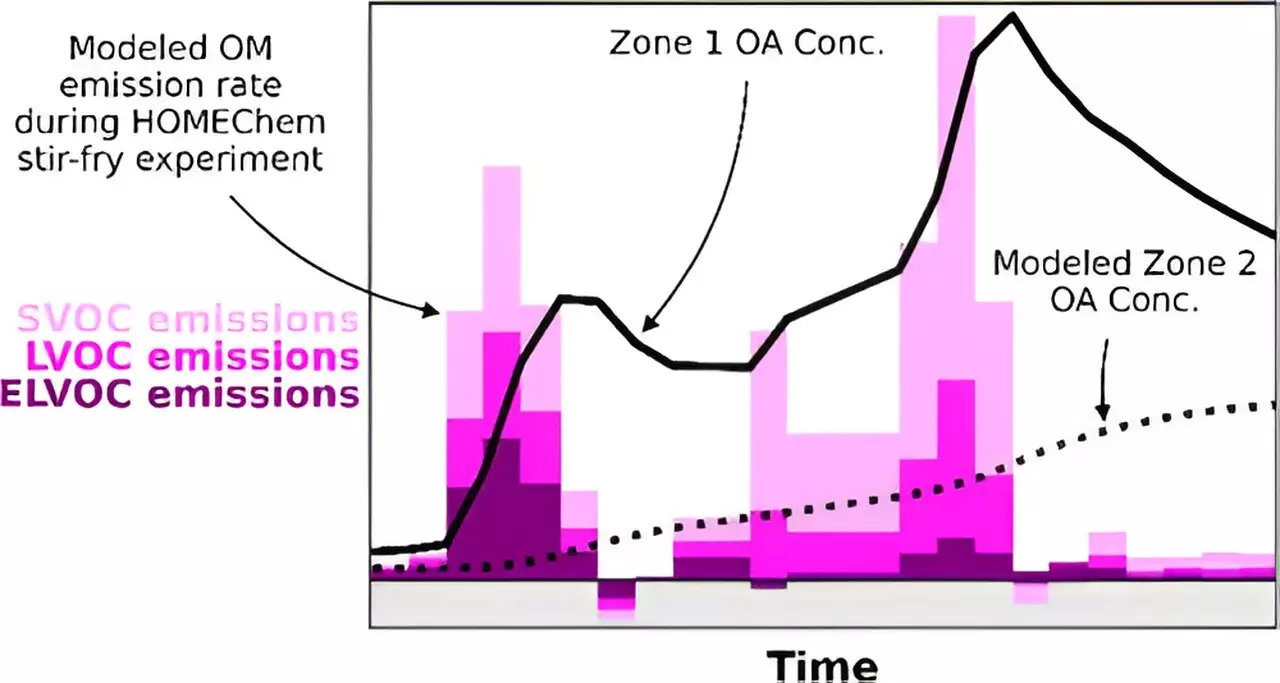Stir-frying is a popular cooking method enjoyed by billions of people around the world. However, this cooking technique not only produces delicious dishes but also emits a mixture of gases and particles that can pollute indoor air and pose a risk to human health. In order to accurately estimate and predict the concentration of these cooking emissions, a team of researchers, including an air-quality expert from Johns Hopkins University, has developed a new model that improves on traditional methods. This article will explore the impact of stir-frying on indoor air quality and the significance of this innovative model in understanding and mitigating exposure to cooking-related pollutants.
Traditional methods of estimating cooking emissions have limitations when applied to real-world settings such as homes and restaurants. With this in mind, the research team utilized detailed particulate measurement data to develop a model that incorporates the dynamic changes in concentration and composition of particles during stir-frying. This new model provides a more accurate understanding of the potential exposure to cooking emissions in indoor spaces, whether it be in residential or commercial cooking areas. The results of this study were published in Environmental Science & Technology.
When food is cooked through stir-frying, tiny particles of oil and other chemicals are suspended in the air. These particles contain a range of organic materials, including triglycerides, fatty acids, proteins, and various chemicals and compounds that are generated when substances are exposed to heat and hot oil. Some of these compounds are emitted as gases, while others attach themselves to particles. Exposure to outdoor particulate matter has been linked to cardiovascular and respiratory illnesses, and the impact of indoor cooking-related particulate matter is still an unanswered question.
To better understand the composition of cooking particles resulting from stir-frying, the research team conducted detailed measurements. They stir-fried a variety of vegetables in soybean oil using both nonstick woks and cast-iron skillets on electric and gas stoves. Real-time measurements were taken to identify the two main types of emissions: one similar to cooking oil and the other similar to particles from burning wood containing partially burned sugars. These emissions were likely from the cooking of vegetables and stir-fry sauces.
Based on the data obtained from the experiments, the research team developed a computer model that simulated conditions in a laboratory setting. This two-zoned model aimed to match the conditions of a field study conducted at the University of Texas at Austin. Previous models assumed that emitted particles and gases remained static and lingered even after cooking had stopped. However, the new model takes into account thermodynamics and how particles and gases dissipate as air moves throughout a space. This better characterizes the composition and concentration of pollutants as they spread.
The new model not only provides valuable insights into pollution levels, airflow patterns, and particle concentrations in homes and buildings but also allows for the assessment of potential exposures and risks at a larger population level. It has the potential to inform health guidelines and recommendations to reduce exposure to cooking-related emissions in indoor spaces. While ventilation of cooking emissions to the outdoors remains the best approach, the model highlights the importance of air filtration and other measures in reducing people’s exposure inside homes and businesses.
The impact of stir-frying on indoor air quality is significant. With the development of a new model that more accurately estimates and predicts cooking emissions, researchers and health experts can gain a better understanding of the potential risks and exposure associated with this cooking method. By implementing appropriate guidelines and measures, individuals and families can reduce their exposure to cooking-related pollutants and safeguard their health within indoor spaces.


Leave a Reply